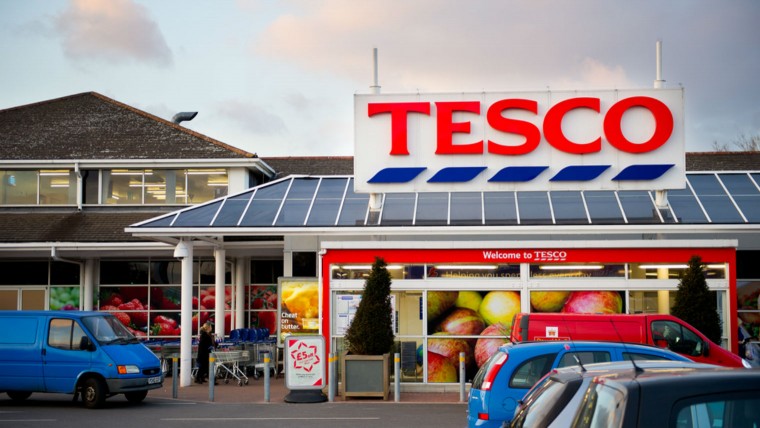If you don’t change, you die. Simple as that. No firm can survive for long by staying with the same formula. According to Professor Richard Foster of Yale University, the average lifespan of an S&P 500 member in the 1920s was 67 years. Today that has fallen to 15 years. He estimates that in the future it will take eight years for three quarters of the S&P to be populated by firms we haven’t even heard of yet.
No matter how strong a firm looks, the rot can set in. Until recently Tesco looked invincible. It was so powerful the Competition Commission investigated it for being a monopoly. One pound in seven on the high street was spent at Tesco. In 2007 the economist Andrew Simms published Tescopoly, an investigation into how the supermarket had crushed its rivals. He lamented: “The store’s already monopolistic control of the British grocery market is set to get even more suffocating…”
Since then the share price has halved. In the last year Tesco has gone through a profit mis-statement scandal, lost its boss, and is being hammered by insurgents Aldi and Lidl. Who saw that coming?
If you can’t admit things are going wrong, you’ll never be able to turn around a company, a product line or a division
So what’s the cure? If there is one, the discipline of business transformation is where you’ll find it. It’s home to tricks, tips, ideas, processes and other ingenious ways of avoiding a premature demise. Like treating cancer, business transformation has no universal approach, and no “cure”. But there are proven methods of getting results.
Being honest tops the list. If you can’t admit things are going wrong, you’ll never be able to turn around a company, a product line or a division.
Here’s a great example of how business transformation should work. Vistaprint was a smash hit from day one. Robert Keane was an MBA student at Insead when he came up with the idea of low-cost business cards for small firms. He founded Vistaprint in 1995, and for 15 years the business grew at a barely believable rate. By 2010 the firm was valued at $1.5 billion and wildly profitable. But the management could see things were going wrong.

Tesco has recently lost its stranglehold on the market
Don LeBlanc, chief marketing officer, recalls: “Our marketing was entirely based on promotional offers with jaw-dropping prices, which would attract price-sensitive customers to our site. We would then up-sell and cross-sell during and after the purchasing process to drive revenue. Unfortunately, in time these business practices began to have a negative impact on customer retention and were harming the reputation of our brand, even though overall revenue was still healthy.”
The website layout was cluttered; the pricing unclear. The marketing materials were obsessed by discounts. The service wasn’t good either. Loyalty was poor. “We started to realise, however, that our customers were not making repeat purchases. Our meteoric growth rates were beginning to show signs of decline.”
This frank analysis revealed Vistaprint needed to transform its culture, marketing, service, design and pricing. Mr Keane stepped up to change the company he’d built.
“In July 2011, Robert made a bold move when he announced to Wall Street that the company would be withholding earnings and committing tens of millions of dollars to improve the Vistaprint experience, from product quality and range, to pricing, to customer service, to the design experience online,” says Mr LeBlanc.
Mr Keane promoted a new company culture. He informed staff at all levels about the new strategy, giving them more autonomy and telling them about his plans. The pricing strategy changed. Surprise “extra” fees were deleted. Discounts were scaled back.
The website got a facelift. New logo; a simpler layout. Canada was used as a testing ground, before ideas were rolled out to the United States, UK, France and Germany.
Few firms that grow and stay in the black realise they are at risk
The result? Net promoter score (customer loyalty metric) is up 20 per cent in the UK. Order values are up and repeat orders are up. Vistaprint is now positioned around quality and service, rather than merely price.
It is an atypical story, as few firms that grow and stay in the black realise they are at risk. Mostly, it takes disaster to trigger a change. Marketing firm EngageSciences got skewered in 2013 when Facebook had changed its algorithm, pushing corporate brands from 16 per cent of the feed to 3 per cent. EngageSciences’ Facebook apps for brands were redundant.
Boss Richard Jones called an emergency board meeting. He repositioned the firm as a platform to help brands turn their websites into social media hubs. “The change in focus turbocharged our business,” he says. “Turnover and staff numbers have more than doubled over the last year and we now work with brands including Vodafone, Microsoft, Spotify, Etihad Airways and AOL Huffington Post, to name a few, helping them drive visits to their websites, interaction with consumers and sales.”
Honesty, boldness, speed and a capacity for reinvention. Just a few of the traits needed for business transformation. What else? You’ll need to find out. The need to transform will never go away. The only question is how are you going to do it?

